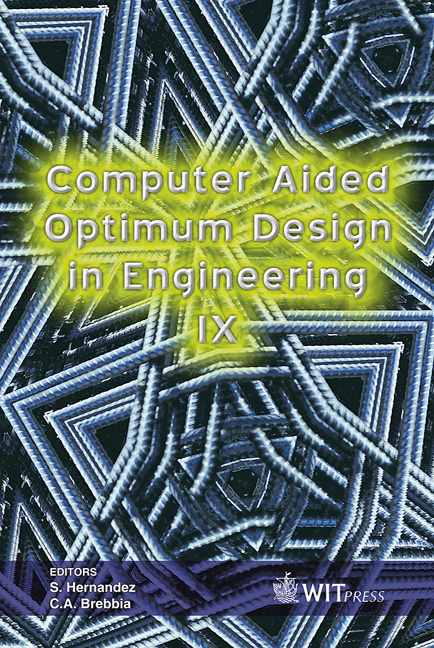Using A Genetic Algorithm In Shape Optimization Of The Front Axle Bump Stop For A New Pickup Vehicle (ZAMAYD-24F)
Price
Free (open access)
Transaction
Volume
80
Pages
11
Published
2005
Size
710 kb
Paper DOI
10.2495/OP050301
Copyright
WIT Press
Author(s)
M. Shafigh, B. Dehghan-Manshadi & B. Khosravi
Abstract
This work describes the use of a genetic algorithm in the shape optimization of a bumper for a new pick-up vehicle. Design optimization has resulted from the implementation of the interaction of the finite element analysis in automotive component manufacture with the best optimization methods. Rubber component design has remained an exception to this trend due to poor material models inadequately representing hyperelastic behavior. However, with a clear understanding of the working environment and an appropriate choice of material constants we have the ability to sensibly predict elastomeric deformation and thus make well-designed rubber products economically. To determine the best material model for the bump stop, this paper compares the results from plane strain indentation and stiffness tests on the rear axle bump stop designed previously, with finite element analyses employing a variety of material models having material constants derived from tests. After achieving the desired configuration changes (by means of shape optimization) and a reliable material model representing the behavior, the design of the front axle bump stop is improved by using a genetic algorithm based finite element analysis. The purpose of this optimization procedure is to tune the fitness curve of the bumper so that its behavior is matched with the expected fitness curve of dynamic simulation. Keywords: shape optimization, bump stop, elastomeric materials, hyperelastic materials, genetic algorithm. 1 Introduction Ever growing competition, new government regulations and customer demands have transformed product and service optimization into the core business of
Keywords
shape optimization, bump stop, elastomeric materials, hyperelastic materials, genetic algorithm.





